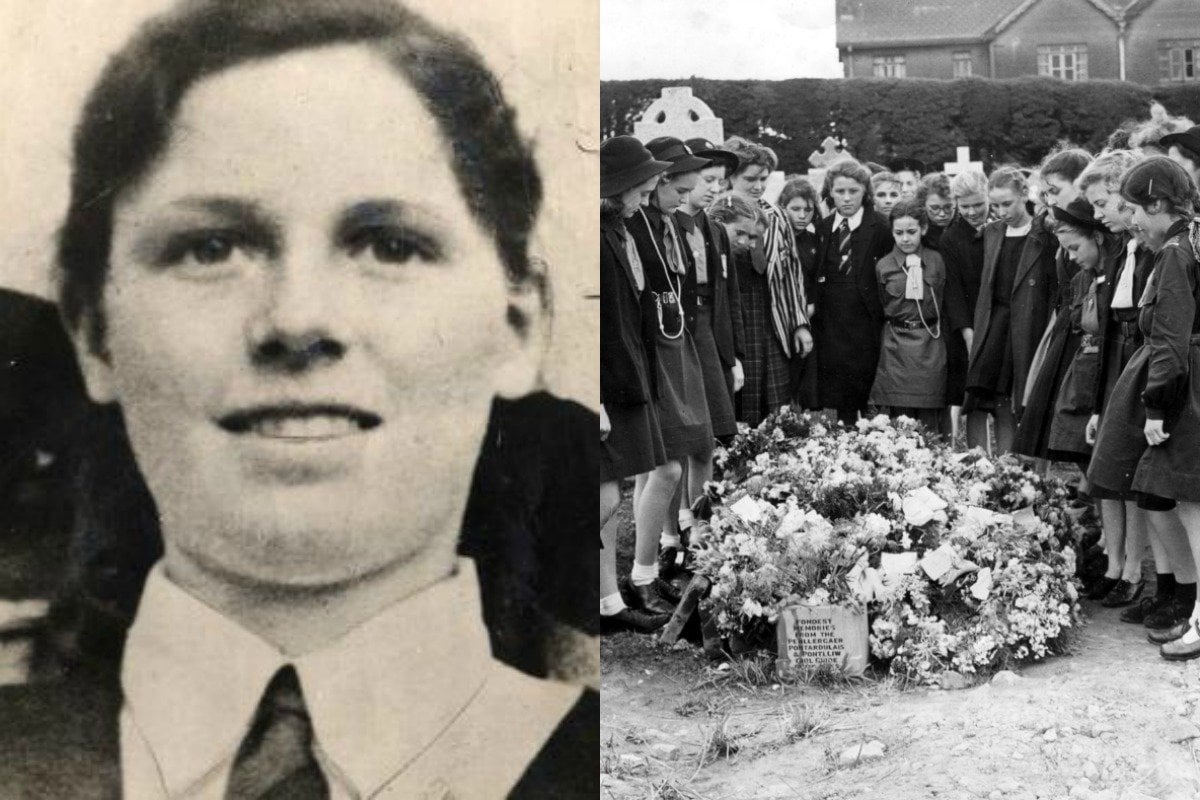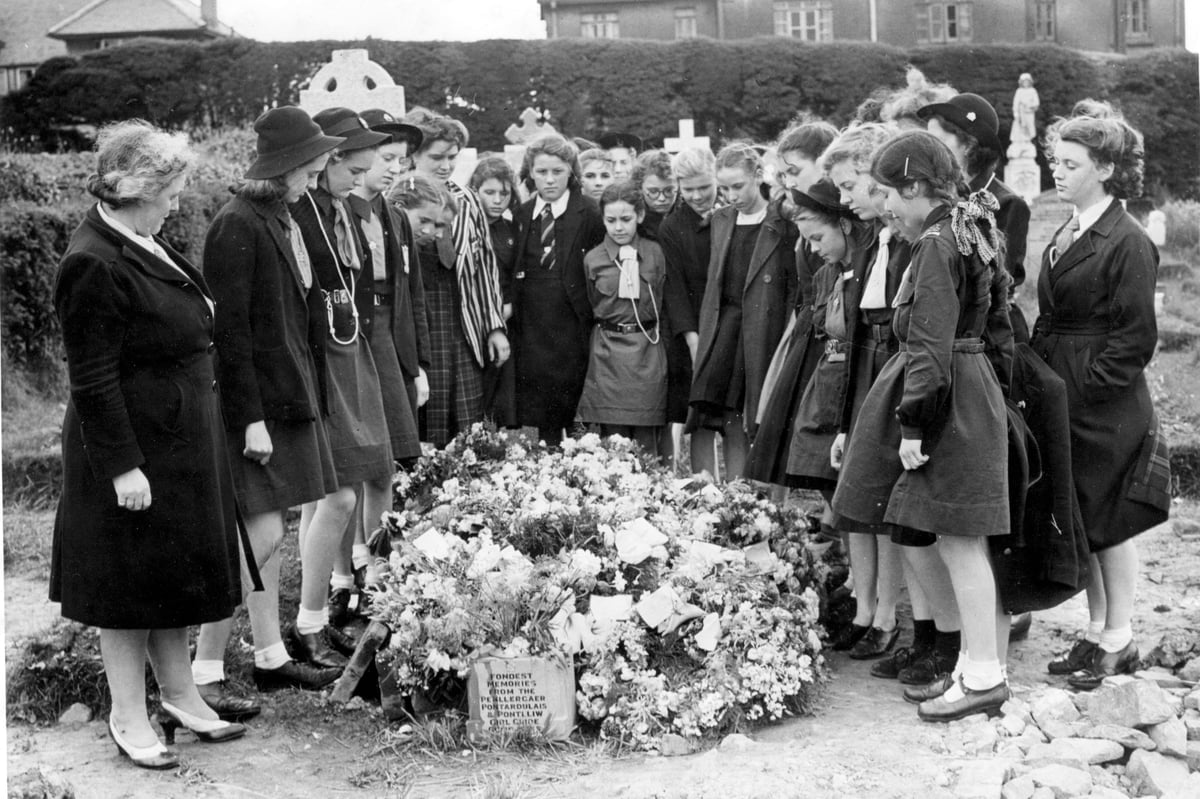
This post deals with sexual assault and might be triggering for some readers.
Twelve-year-old Muriel Drinkwater was a choirgirl who dreamed of being a schoolteacher. She was singing on the school bus with her friends, on the afternoon of June 27, 1946, when she was dropped on the side of the road near her family’s farm on the outskirt of Swansea, Wales. She kept singing as she skipped along the path through the woods to the farmhouse.
On the path, she bumped into a boy called Hubert Hoyles, who had just bought some eggs from her mother Margaret.
Margaret was making a pot of tea when she looked through the kitchen window and saw Muriel, through a gap in the trees, just 500 metres from the house. Muriel waved. That was the last time Margaret ever saw her daughter alive.
Watch the trailer for True Crime Conversations, Mamamia's true crime podcast. Post continues below.
"She lost sight of her for a few moments," former detective inspector Paul Bethell says in the new BBC documentary Dark Land: Hunting The Killers. "The crime scene is a short distance from the farmhouse. She had been attacked on the lane and then she was dragged to where the body was left."
At first, when Muriel didn’t arrive home, Margaret wasn’t too worried. She thought her daughter must have gone off to play with friends. After a few hours, her father John Percival and other locals began searching for Muriel.


Top Comments